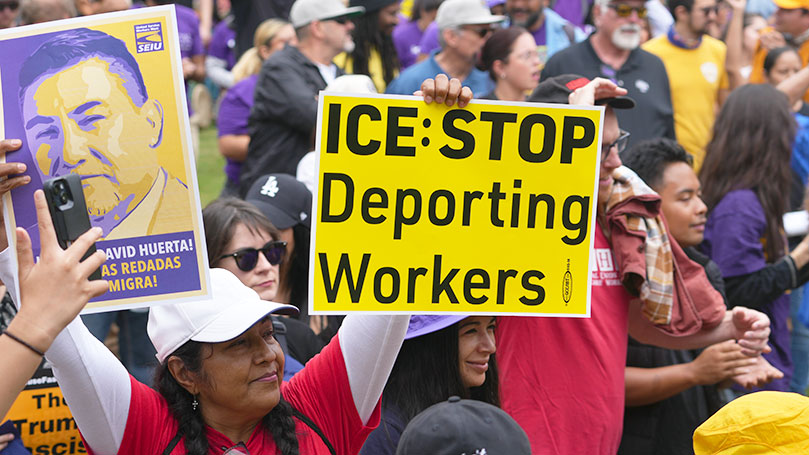
What can labor do to save itself, and our country?
In no particular order:
- Get bigger
- Get political
Here are some hard facts about getting bigger.
Since 1947 when the Taft–Hartley Act eviscerated the 1935 Wagner Act, which actually encouraged collective bargaining, the percentage of the U.S. workforce unionized shortly peaked, then plateaued, then fell, and kept falling for over 70 years until today, when it is still falling.
How did Taft–Hartley accomplish this?
It was pretty simple, at one level. It effectively banned political boycotts and strikes and legalized “permanent replacement” scabbing. It legalized the threatening of workers with discipline, firing, or lost jobs for unionizing under a so-called “free speech” provision. The law also effectively banned “communist” associations in labor. This was used as a sledgehammer against labor radicalism of any kind — nearly the only kind that could lead major organization drives in factories, or movements within labor for racial equality and an end to segregation.
Nonetheless, if the workplace was “immovable,” and workers were sufficiently organized to gain a sense of their power, these obstacles could be overcome. But the workplace was not immovable. The effects of Taft–Hartley are made more difficult to overcome as a result of the technological and globalization forces eroding union membership everywhere.
Automation and globalization, each, destroyed more union jobs than the passage and enforcement of anti-labor labor laws by anti-labor administrations could have achieved on its own. Legal unionism in the U.S. was hard won. Taft–Hartley paralyzed the ability of legal unions from being able to spread deeply into the service and high-tech economy. Thus, it destroyed unions’ universality and greater legal authority as envisioned in the Wagner Act.
Regardless of one’s views on the mistakes or wisdom of labor leaders in this long trail of retreat, that they are still standing at all after 75 years of unending assaults deserves its own monument.
Modern labor law was written for industrial organization. The CIO was the major force driving it. One could write reams about the particular features of U.S. labor law that bear the marks of its origin.
However, an outcome of both technology and globalization has been the transformation, overwhelmingly, of the workforce from farming and production to services. The business models of service firms very often include a significantly different relationship between wage labor and customers, and thus also between workers and employers.
Labor law, in reality, discourages collective bargaining rights in services, more than in production — at least before production began shrinking. Public workers were an exception — until now. Today, more than one million of them have had their bargaining rights destroyed by executive order under “national security considerations.”
I hope no one thinks the current Supreme Court is going to stop this.
So, the alternatives for organized labor to speak to, for, or with the millions of unorganized workers who share their mutual concerns for higher wages, gainful work, justice, safety, and not leaving people behind, get narrowed to politics, frankly.
Politics requires allies. For the organized labor movement, that means, in the first place, the currently unorganized.
Central labor councils are the chief current political arm of the AFL-CIO. Union contracts cover all bargaining unit employees, who are typically not hired based on their political affiliation. In some respects, this narrows the scope of political action to the scope of common ground embracing a real majority of all members. But this is inevitable in labor, where power is always proportional to the level of solidarity it can demonstrate, not whether we can outspend a big business politician.
I am not at all sure of how central labor councils can best adapt to these new conditions of survival. But my grandmother (from Huntington, W.Va.), who was skeptical of nearly all “good intentions,” affirmed “necessity is the mother of all virtue” until her dying breath.
I note the ability of the Alliance for Retired Americans, an AFL-CIO affiliate, to accept charter applications from “community” groups of retirees who pay dues and agree with the mission.
Perhaps forms like this could be devised and adapted to other groups of allies that might substantially expand labor’s base among populations that repression and ruined labor laws exclude from participation.
The opinions of the author do not necessarily reflect the positions of the CPUSA.
Image: Free David Huerta rally by seiu721 (Flickr)


 Join Now
Join Now